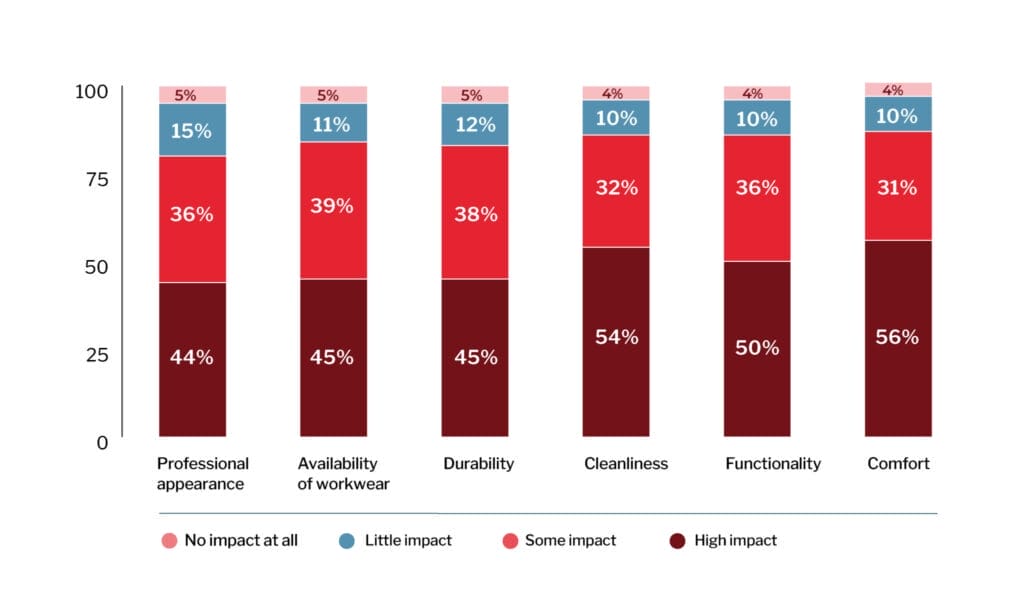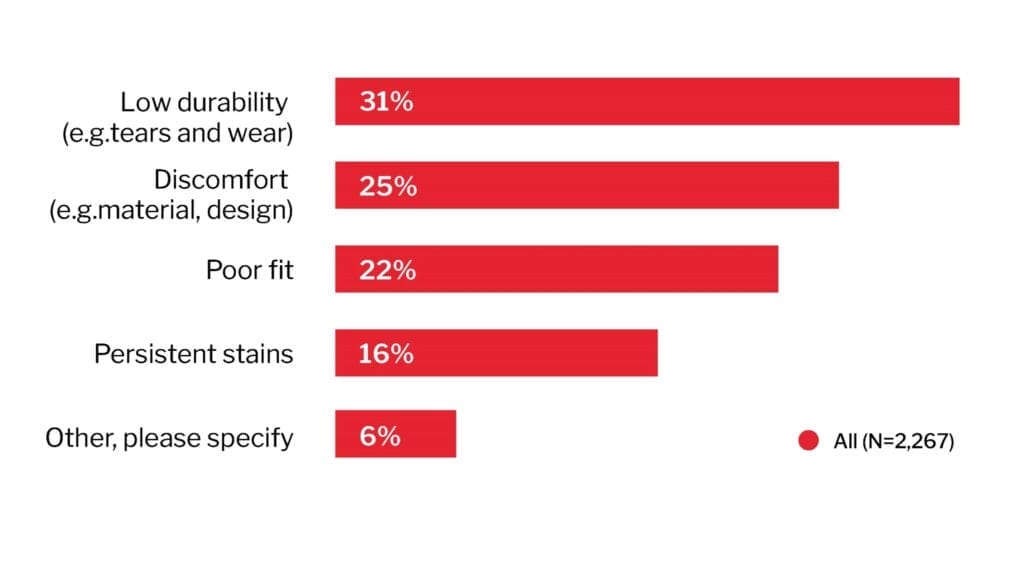
Study shows that workwear impacts employee satisfaction
A recent European-wide study shed light on how workwear impacts employee satisfaction and productivity. Workwear comfort, functionality, and cleanliness significantly impact employee satisfaction. The study also showed that employees still play a major role in washing and maintaining their workwear.
The study surveyed 2,276 workwear users in the production sector across 11 European countries. It was conducted by the leading market research company Norstat for Lindström. It found that an impressive 86% of respondents indicated that comfort, functionality, and cleanliness of their workwear influenced their satisfaction. Furthermore, 19% reported that well-fitted workwear enhances their productivity.
Impact of workwear features on job satisfaction

Workwear maintenance falls on employees
Many employees continue to shoulder the responsibility for laundering and maintaining their garments. Over 70% of respondents reported washing their workwear at home, and 22% said they personally repaired damaged items.
“These findings highlight a clear opportunity for companies to improve employee well-being and productivity. The ease of workwear-related practices is often overlooked. Many employees invest considerable time and effort in maintaining their garments,” says Irena Kostelanská, product manager at Lindström. “Work clothing also contributes to employee comfort, safety, and a sense of pride. Poorly fitting or uncomfortable garments can negatively affect not only morale and performance but also workers´ safety.”
Low durability and lack of repair services burden employees
The study revealed that workwear durability remains a significant concern. It was the most frequently mentioned issue, with 31% of respondents citing low durability as their primary complaint, followed by discomfort (24%) and poor fit (22%). Additionally, more than half of the employees stated that repair services are not provided by their employers. As a result, the responsibility for maintenance falls on the employees themselves, or the garments are discarded once damaged.
What issues in workwear bother employees

“Low-quality garments and the absence of adequate repair services place an extra burden on employees. This also contributes to unnecessary textile production. Circular design is becoming increasingly important, especially with upcoming EU regulations driving change. Workwear must be designed for durability, repairability, and reuse,” says Kostelanská.
As workplace expectations evolve, investing in employee satisfaction is more important than ever. While not the sole factor influencing workforce happiness, proper workwear clearly impacts employee satisfaction.
More information about the study
Leena Kähkönen
Manager, External communication
+358 50 58 68 582
About the study
The study was conducted by Norstat, the leading independent European data collector for market research in February 2025. It covered 11 European countries: Bulgaria, Croatia, Czech Republic, Estonia, Germany, Hungary, Latvia, Lithuania, Romania, Slovakia, and Türkiey.
A total of 2,276 workwear users in manufacturing industry participated in the survey. The majority of respondents were permanent employees, (79% of participants), women and men equally presented (50%).





